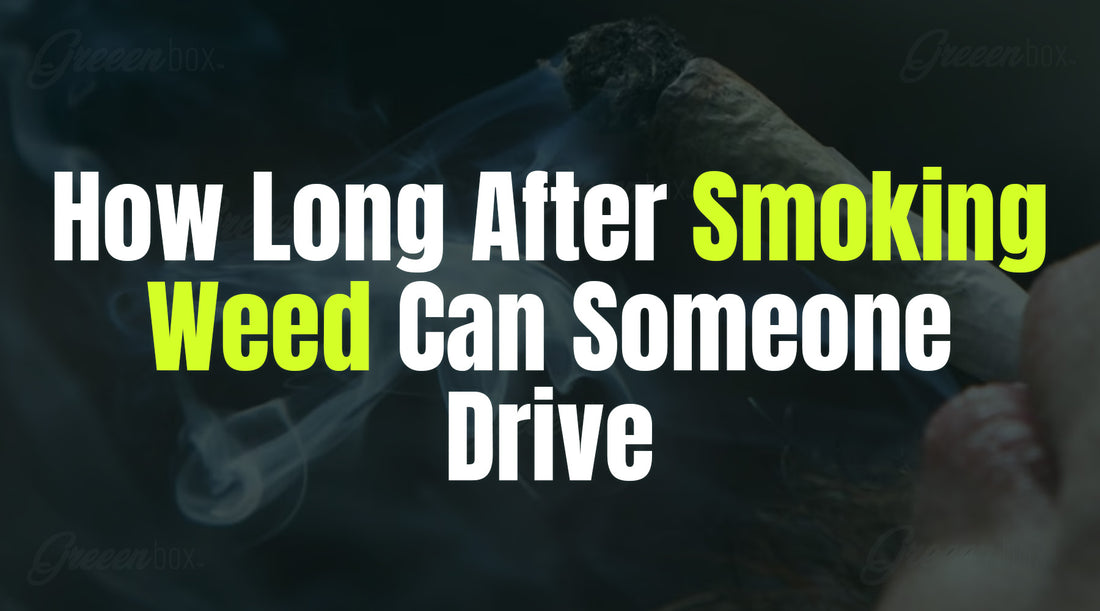The dilemma of when it is appropriate to drive after smoking cannabis is gaining momentum, especially with the legalization of pot in many states in America. It is not only a matter of conforming to the law — one has to ensure the safety and that of other road users. There cannot be a definitive guideline akin to saying ‘Wait for an hour after each drink’ with regards to cannabis usage. The effects here are very subjective and range from person to person and from one smoking session to another.
How much one smoked, the potency of the weed, and the individual’s body all come into play. Some people may be okay to drive after an hour while others may not be able to drive for several hours or even the next whole day. This uncertainty has forced a lot of positions taken by users, policymakers, and researchers within the debate.
As cannabis becomes more mainstream, with options like weed subscription boxes making it easier than ever to access, understanding its impact on driving is crucial. It's not just about avoiding a ticket - it's about preventing accidents and keeping roads safe for everyone.

Flower of the Month Subscription
|

Lullaby Sleep Gummy Night Berry
|

GreeenBox Subscription
|
How Long After Smoking Weed Can You Drive Again?
The short answer is: IT DEPENDS! Unlike alcohol, which has a more predictable timeline for how it affects the body, cannabis can have varying effects based on several factors:
- The potency of the weed
- Amount consumed
- Method of consumption (smoking, edibles, etc.)
- Individual tolerance
- Body weight and metabolism
- Frequency of use
Generally, the immediate effects of smoking weed can last anywhere from 1 to 3 hours. However, this doesn't mean you're safe to drive after this window. Impairment can linger long after the "high" feeling has passed.
Colorado department of transportation suggest waiting at least 6 hours after smoking before driving. But for heavy users or those who've consumed high-potency strains, the wait time could be much longer. It's not uncommon for traces of THC, the main psychoactive compound in cannabis, to be detectable in the body for days or even weeks after use.
This lingering presence doesn't necessarily mean you're still impaired, but it does complicate the issue of roadside testing. Unlike breathalyzers for alcohol, there's no universally accepted test for cannabis impairment.
For those who enjoy monthly weed boxes, it's important to plan ahead. If you know you'll be sampling new products, make sure you have alternative transportation options lined up. It's always better to err on the side of caution when it comes to driving.
Read more: Why Does Smoking Weed Make Your Eyes Red?
So, How Long Should You Wait to Drive After Smoking Weed?
Determining the exact wait time before driving after smoking weed is challenging, but here are some general guidelines:
Light users (occasional use):
- Wait at least 4-6 hours after smoking
- For edibles, wait at least 8-12 hours
Regular users:
- Wait at least 6-8 hours after smoking
- For edibles, wait at least 12-24 hours
Heavy users or high-potency strains:
- Wait at least 8-12 hours after smoking
- For edibles, wait at least 24-48 hours
Different consumption methods can affect how long the effects last. Smoking or vaping tends to produce a quicker onset but shorter duration of effects compared to edibles. If you're trying new products from your weed subscription boxes, be cautious and give yourself plenty of time before considering driving.
Read more: How To Stop Getting Cotton Mouth When Smoking Weed?
Factors Affecting Cannabis Impairment
Several factors can influence how long cannabis affects your ability to drive safely:
- THC concentration: Higher THC levels can lead to longer-lasting impairment.
- Frequency of use: Regular users may develop a tolerance, but this doesn't necessarily mean they're safe to drive sooner.
- Individual physiology: Everyone's body processes cannabis differently.
- Mixing with other substances: Alcohol or certain medications can amplify the effects of cannabis.
Understanding these factors is crucial, especially if you're exploring different strains through monthly weed boxes. What affects you mildly one day might hit you harder the next, so it's important to always err on the side of caution.
Read more: How Long After Surgery Can I Smoke Weed Again?
Legal Implications
The legal landscape surrounding cannabis and driving is complex and varies by location. In many places, it's illegal to drive with any detectable amount of THC in your system, regardless of whether you're actually impaired. This "zero tolerance" approach can be problematic, as THC can be detected long after the impairing effects have worn off.
Some states have established legal limits for THC blood concentration, similar to blood alcohol content (BAC) limits. However, these limits are controversial because THC blood levels don't correlate as directly with impairment as alcohol levels do.
If you're caught driving under the influence of cannabis, this can lead to severe legal consequences:
- Fines
- License suspension
- Mandatory drug education programs
- Jail time (especially for repeat offenses)
- Increased insurance rates
These penalties underscore the importance of being cautious. Even if you feel fine to drive, it's not worth risking your safety and legal standing.
Detecting Cannabis Impairment
Unlike alcohol, which can be easily measured with a breathalyzer, there's no widely accepted roadside test for cannabis impairment. Law enforcement often relies on:
- Field sobriety tests
- Blood tests (which can only show recent use, not current impairment)
- Saliva tests (still in development and not widely used)
- Drug recognition experts (officers trained to spot drug impairment)
The lack of a reliable, immediate test makes it challenging for both law enforcement and users to determine when it's safe to drive. This uncertainty is another reason to be extra cautious and wait longer than you might think necessary before driving.
Strategies for Safe Cannabis Use and Driving
If you choose to use cannabis, here are some strategies to ensure you're not putting yourself or others at risk on the road:
- Plan ahead: If you know you'll be smoking, arrange alternative transportation.
- Use a designated driver: Just like with alcohol, have a sober friend drive.
- Use ride-sharing services or public transportation.
- Wait it out: If you must drive, wait much longer than you think necessary.
- Stay overnight: If you're at a friend's place, consider sleeping over.
- Be honest with yourself: If you're not sure if you're okay to drive, you're probably not.
Read more: Can You Smoke Decarbed Weed?
Wrapping Up
It is impossible to give a specific time frame for driving after smoking weed. Of course, the best way is to avoid any cannabis consumption before taking the steering wheel. If this provision is not applicable to you, then wait way longer than you have to - better yet until the next day. With cannabis consumption and monthly home deliveries gaining ground, there must be some caution to use such products.
At the end of the day, the driver should be entirely sober before considering that they should get behind the wheel while not feeling okay. No high or temporary euphoria should put anyone's life in danger or even the lives of other people.
At Greeen Box, our curated monthly weed boxes are packed with premium strains, innovative accessories, and tasty edibles to elevate your green lifestyle. Each month, unwrap a treasure trove of hand-picked products, from exotic flower varieties to modern vapes and artisanal CBD treats.



